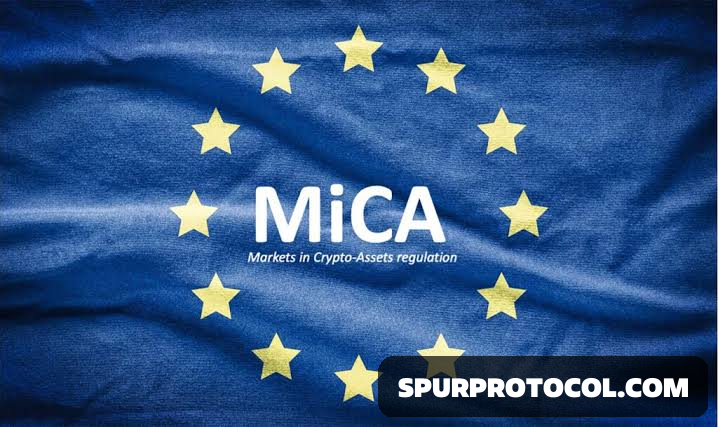What Is Markets in Crypto-Assets (MiCA)
The Markets in Crypto-Assets (MiCA) regulation is a landmark framework created by the European Commission (EC) that focuses on maintaining financial stability. It also is designed to protect investors and promote widespread transformation in the crypto asset sector in European Union (EU) countries.
What Are the Key Components of MiCA
1. Licensing requirements
- One of MiCA’s primary components is the licensing requirements for issuers of crypto assets (with some exceptions) and providers of crypto-related services such as exchanges and wallet providers.
- These rules help streamline processes for initial coin offerings (ICOs) and security token offerings (STOs) and ensure that issuers adhere to disclosure and transparency requirements.
2. Stablecoins and asset-backed tokens
- MiCA includes specific requirements for asset-referenced tokens (ART) and electronic money tokens (EMT), which could potentially pose risks to financial stability.
- ART denotes crypto tokens exchangeable with multiple fiat, physical assets, or cryptocurrencies, while EMTs refer to tokens pegged to one fiat currency.
- The framework delineates authorization processes, capital requirements, and governance structures for issuers of stablecoins, helping maintain their stability and ensure that they meet minimum asset reserve requirements.
3. Anti-Money Laundering (AML) and Counter-Terrorist Financing (CTF) rules
MiCA strengthens Anti-Money Laundering (AML) and Counter-Terrorist Financing (CTF) rules for crypto assets service providers.
- This requires that these providers implement robust AML/CTF procedures in line with existing regulations like the Anti-Money Laundering Directive (AMLD) of the EU.
4. Consumer protection
- MiCA's consumer protection measures are designed to safeguard investors and traders by imposing several obligations on market participants.
- This includes pre-contractual disclosures, rules regarding targeted advertising, and mandatory transparency in service offerings. Enforcing strict transparency and disclosure requirements allows MiCA to hold market participants accountable, which helps reduce the likelihood of fraud and other unsanctioned activities.
5. Supervision and enforcement
- MiCA provides a framework for supervision and enforcement through the establishment of supervisory authorities at national and supranational levels.
- National authorities will oversee service providers, while the European Securities and Markets Authority (ESMA) will supervise specific aspects, such as stablecoins and cross-border services.
- The collaboration between national and supranational authorities could aid the smooth implementation of MiCA regulations across the European Union.
Benefits of MiCA
1. Consumer protection
MiCA establishes clear rules and standardized disclosure requirements, which are designed to protect investors from fraudulent activities and malicious actors in the crypto market.
2. Market integrity
By regulating and supervising market participants, such as exchanges and wallet providers, MiCA enhances market transparency and integrity, fostering a fair and competitive environment.
3. Increased institutional investment
- The legal certainty and robust regulatory framework provided by MiCA could attract more institutional investments.
- Greater participation from institutional investors can inject more capital into the market, further facilitating the growth and maturity of the crypto market.
4. Legitimization and innovation
- With a standardized regulation in place, the crypto market could obtain a greater level of legitimacy and is more likely to receive support from governments.
What Are the Limitations of MiCA
1. Increased compliance costs
- MiCA mandates additional compliance procedures for market participants, which could increase operational expenses, especially for smaller firms and start-ups that may struggle to allocate resources for compliance.
2. Reduced pseudonymity
- MiCA's stringent Anti-Money Laundering (AML) and Know Your Customer (KYC) provisions may result in a loss of pseudonymity for some market participants.
- This aspect could dissuade privacy-focused individuals and companies from engaging in the EU crypto market.
3. Overregulation concerns
- Some industry participants argue that overregulation could stifle innovation and competition, as market players may find it difficult to navigate a vast array of legal requirements.
- Implementing MiCA without hindering innovation is a significant challenge for regulatory bodies.
4. Market barriers for small businesses
- The resources required to comply with MiCA might create barriers to entry for smaller businesses and start-ups, potentially benefiting established, larger players with more resources.
- Such barriers may reduce diversity in the crypto market and stifle emerging developments.
